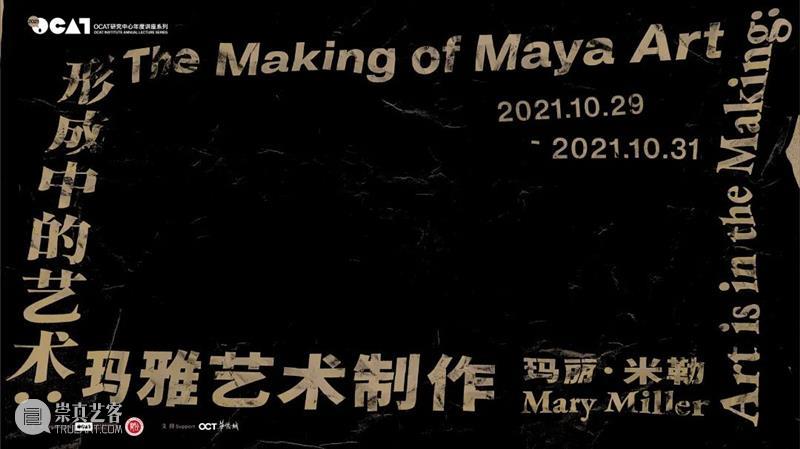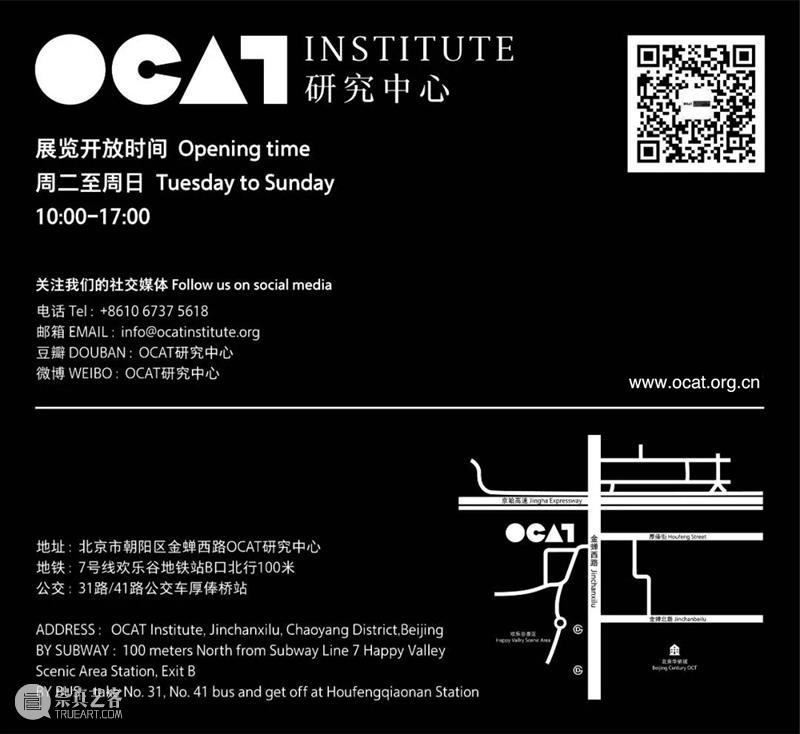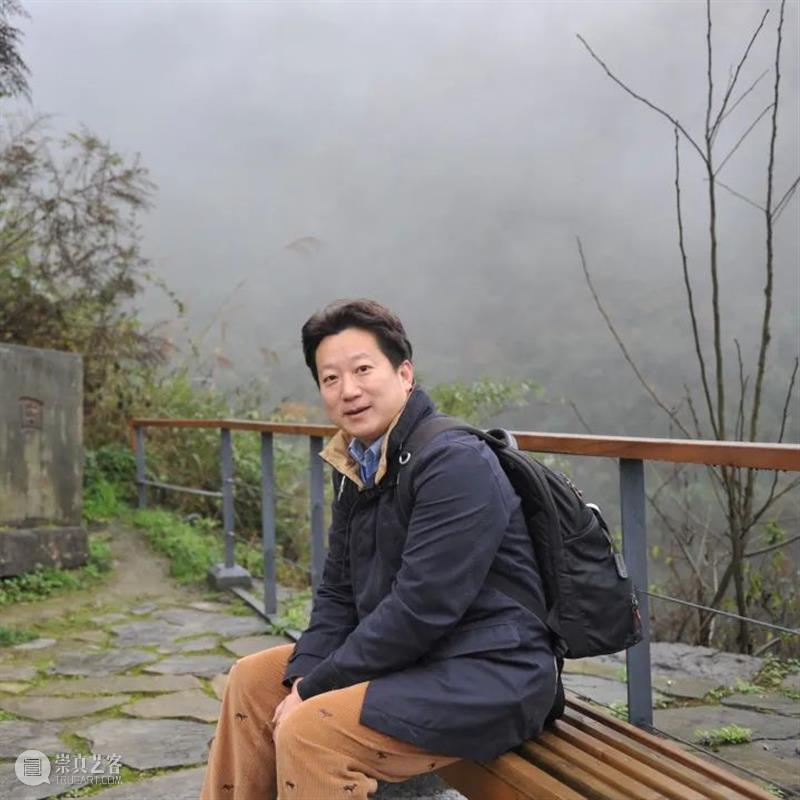

Lecture 3
Maya Art in Modern Times
Lecturer: Mary Miller (Director of the Getty Research Institute)
Respondent: Xu Jian (Professor of the Department of history, Shanghai University)
Moderator:
Wu Hung (Executive Director of OCAT Institute; Professor of the Department of Art History and the Department of East Asian Languages and Civilizations, University of Chicago)
Hosts:
Guo Weiqi(Academic Director of OCAT Institute; Associate Professor of Art History, Guangzhou Academy of Fine Arts)
Liu Lingyi (Public Programs, OCAT Institute)
Time: 2021/10/31 9:30am- 12:30pm (GMT+8)
Zoom ID: 817 1803 1681
Passcode: 123456
Abstract
The first lecture touched upon the exploration and exploitation of Mesoamerica. The Maya region, as European explorers would discover, was largely bereft of precious metals for mining, and the Maya died of European diseases when enslaved; so, as long as they practiced Christianity, they suffered fewer depredations than elsewhere in the Americas, despite widespread general oppression punctuated by specific acts of European aggression. They lived near, though normally not in, the great “ruins” that had characterized Maya civilization, but Europeans knew little of these sites. Then, in the late 18th century, travelers began to seek out the past systematically, a process that developed quickly after 1821 with the independence of Mexico from Spain. Starting in the late 19th century, systematic archaeology began to reveal a Maya past underneath the ground, with enough Maya cities soon identified to result in widespread recognition of “Maya civilization” by 1900. Despite common and fantastical attribution of the signs and inscriptions of the ancient Maya to the Lost Tribes of Israel, Atlantis, or other inventions, the connection between the contemporary Maya (of Mexico, Guatemala, Belize, El Salvador, and Honduras) and these ancient, long-abandoned cities became clear.
Alongside this extremely interesting revelation of an important ancient civilization and its living legacy, another trend was developing in the study of art outside the European tradition, especially the arts of Indigenous peoples whose cultural traditions evolved outside the literate cultures of Europe and Asia. This concept was an outgrowth of 19th century anthropology, which categorized cultures to be savage, barbaric, or civilized, presenting a developmental set of strata in which hunter-gatherers could be seen as on a path to modern European practice. Over the course of the 20th century, the arts of Oceania, Africa, and the Americas took on the nomenclature of “primitive.” First formed in the natural history museum, and in the context of ethnographic collections taken from European colonial possessions, the concept of “non-western” or “primitive” made assumptions about makers, traditions, and materiality that helped assert both European authority and a colonial sovereignty that was as much economic as imperial.
After World War II, “the primitive” or “non-western” began its journey from the natural history museum to the art museum, perhaps most completely exemplified by the Museum of Primitive Art, established by Nelson Rockefeller in 1954, which became the Michael Rockefeller Wing for Primitive Art at the Metropolitan Museum of Art in 1981. This last lecture will examine the role and meaning of Maya art in the art museum, the market forces that have underpinned its acquisition, and the complex situation in which it finds itself in 2021.
Respondent: Xu Jian
Response: Homogeneous or Alien: Chinese Art in American Museums
Chinese art in the collections of American museums encounters the same identification inquiry as that occurred to Maya art. Should it be classified as fine arts, or ethnographic materials? Major Chinese art collections in the States were formed in the late 19th and early 20th century. Due to sharp differences in theme, technique, medium and connoisseurship, it was not easy for Chinese art to be accommodated in the well-defined framework of art history based on Western experience. Art dealers played a decisive role in reserving an unique and semi-independent space for East Asian or Chinese culture and arts in art museums. The art market also impacted the composition of collections of Chinese arts at various museums.
Additionally, it has been neglected for long that anthropological or ethnographic museums, for instance, the American Museum of Natural History in New York and the Field Museum in Chicago, maintain Chinese art collections with a rather different appearance and motivation. A worldwide anthropological collection, including Chinese, was taken as a manifesto of a dominant power. Throughout the past century, the status of Chinese art collection in American museums has been continuously shifted. Such change and tendency is clearly illustrated by the changes in the presention of Chinese arts at the Freer Gallery in the past few decades.
Lecturer
Mary Miller
Dr. Mary Miller is Director of the Getty Research Institute, located at the Getty Center in Los Angeles, California. She earned her A.B. from Princeton University and her Ph.D. from Yale University. A specialist of the art of the ancient Americas, Dr. Miller is both a scholar and curator, as well as a prominent figure in institutional leadership.
Dr. Miller is the author of numerous scholarly articles, and the author or co-author of many celebrated books, including: The Murals of Bonampak (1986), The Art of Mesoamerica (1986, now in its 6th edition), The Gods and Symbols of Ancient Mexico and the Maya (1993, with Karl Taube), and Maya Art and Architecture (1999, now in a new edition with Megan O’Neil). With Barbara Mundy, Dr. Miller edited Painting a Map of Mexico City (2012), a study of the rare Indigenous (Colonial Aztec) map in the Beinecke Library of Yale University; and with Claudia Brittenham, she wrote The Spectacle of the Late Maya Court: Reflections on the Murals of Bonampak (2013). Among her diverse curatorial activities, Dr. Miller co-curated the landmark exhibition The Blood of Kings (1986) with Linda Schele at the Kimbell Art Museum of Fort Worth, Texas, and she led The Courtly Art of the Ancient Maya (1994) at the National Gallery of Art, Washington, D.C.
Dr. Miller is also recognized for her work as a leader in higher education and the humanities. Long a member of the Yale University faculty, Dr. Miller served in many administrative roles before coming to the Getty, notably as Dean of Yale College from 2008-2014; she was the first woman to hold this position. At Yale, she also served as chair of the Department of History of Art, chair of the Council on Latin American Studies, graduate advisor to the program in Archaeological Studies, and as a member of the Steering Committee of the Women Faculty Forum. From 2016-2018, she was Senior Director of the Institute for the Preservation of Cultural Heritage on Yale’s West Campus. As Director of the Getty Research Institute, she has led efforts in Pre-Hispanic Art Provenance; Diversity, Equity, Accessibility, and Inclusion (DEAI); and the promotion of increasingly diverse opportunities for academic and community engagement.
For her work on ancient Mexico and the Maya, Dr. Miller has won national recognition, including a National Endowment for the Humanities Fellowship in 1988 and a Guggenheim Fellowship in 1996. In 1994, she was elected to the American Academy of Arts and Sciences. She has delivered numerous named lectureships, including the Fifty-Ninth A.W. Mellon Lectures in the Fine Arts at the National Gallery of Art in 2010, the Slade Lectures at Cambridge University in 2015, and the Tatiana Proskouriakoff Award Lecture at Harvard University in 2021. Yale University will honor her with the Wilbur Cross Medal in 2022, the highest award to its graduate alumni.
Respondent
Xu Jian
Professor Jian Xu is the chair of the Department of history, Shanghai University, and the council member of Society of Chinese Archaeology and Society of Ancient Chinese Bronze Drums. His current research interests include archaeological history and theory, Bronze Age archaeology in South China and Southeast Asia, museology, and cultural heritage studies. He was a Visiting Assistant Professor at Bard College in 2005-2006, a Hermes Fellow at Fondation Maison des Sciences de l’Homme in 2008, an Exchange Professor at Soka University in 2014, and a Visiting Scholar at the Harvard-Yenching Institute in 2017-2018. He has been Principal Investigators for many research projects supported by the Wenner-Gren Foundation, British Library, National Geographic Society and Sumitomo Foundation. He has been curators for many exhibitions at the Museum of Bronzes in Shanxi, Goethe Institute in Shanghai, Guangdong Art Gallery, and Luoyang Museum. He has published books including Alternative Traditions in Pre-1949 Chinese Archaeology (Beijing: Science Press, 2012), Bronze Weapons before the Eastern Zhou dynasty (Shanghai: Shanghai Classic Press, 2014, 2021) and Great Foundations: an Intellectual History of Early Museums in China (Beijing: Science Press, 2016), and more than 50 journal articles and conference papers.

Mary Miller
Art is in the Making:
The Making of Maya Art
Organizers
OCAT Institute
Institute of Humanities and Social Sciences, Peking University
Support
OCT Group Co., Ltd.
Time
2021/10/29–10/31
9:30am- 12:30pm (GMT+8)
Language
Mandarin and English Simultaneous Interpretation

The OCAT Institute is an independent non-profit research center dedicated to the history of art and its related discourses. It is also an integral part of the OCAT Museums. The Institute has three main areas of activity: publication, archive, and exhibition. The scope of its research encompasses Chinese art from antiquity through the modern and contemporary period. More specifically, it investigates artists, artworks, art movements, exhibitions, aesthetic discourses, as well as art institutions, publications, and other aspects of art’s overall ecology. It will establish a research archive and facilitate dialogue and exchange between China and abroad. In addition, it serves as an exhibition platform in Beijing.
The OCAT Institute aims to establish a paradigm of valuation, a framework of academic investigation, and a unique set of methods, for historically grounded research on modern and contemporary Chinese art. Its scholarly vision has at its core: knowledge, intellect, and research. It seeks to forge connectivities between traditional art history and research on modern and contemporary art, and support the translation and publication of critical works on art history. Through an interdisciplinary approach that bridges contemporary art research, critical theory, and the history of ideas and visual culture, it promotes an integrated methodology and an open spirit of academic research.



已展示全部
更多功能等你开启...







 分享
分享